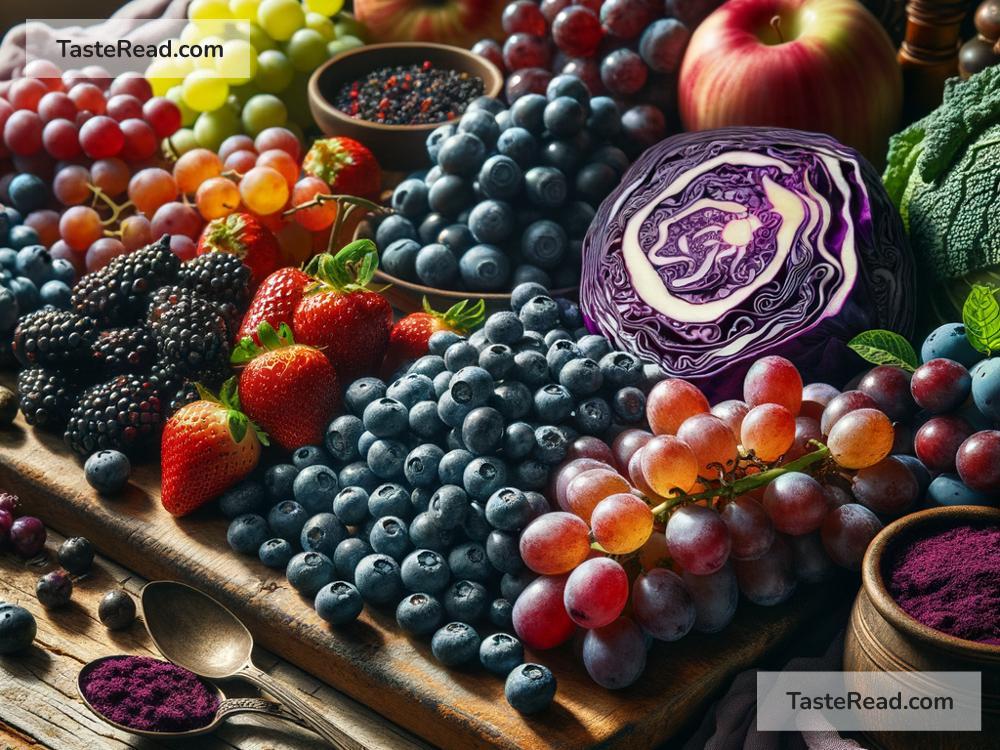Understanding the Role of Anthocyanins in Health
Have you ever wondered why foods like blueberries, red cabbage, or blackberries have such vibrant colors? The answer lies in anthocyanins – natural pigments that give many fruits, vegetables, and flowers their blue, red, and purple hues. Beyond just looking pretty, anthocyanins play a remarkable role in promoting health and enhancing well-being. Let’s dive into what anthocyanins are, where to find them, and how they can positively impact your health.
What Are Anthocyanins?
Anthocyanins are a type of compound called flavonoids, found naturally in plants. Flavonoids belong to a larger group of nutrients known as polyphenols, which are famous for their antioxidant abilities. Essentially, anthocyanins are plant pigments that protect plants from environmental stressors like UV light and diseases. These pigments are water-soluble, meaning they dissolve in water, which is why they appear so brightly in the juices of fruits.
While anthocyanins protect plants, they also have some incredible benefits for humans when we eat anthocyanin-rich foods.
Where Can You Find Anthocyanins?
These colorful compounds are found in a variety of dark-colored fruits, vegetables, and even grains. Foods rich in anthocyanins include:
– Berries: Blueberries, blackberries, strawberries, raspberries, and elderberries.
– Dark-colored fruits: Cherries, plums, and grapes (especially red and purple grapes).
– Vegetables: Red cabbage, eggplant (especially its skin), and purple sweet potatoes.
– Grains: Black rice and purple corn.
– Drinks: Red wine and certain teas also contain anthocyanins.
If you want to increase your anthocyanin intake, start by adding more of these colorful foods to your meals. The darker and deeper the color, the better!
How Do Anthocyanins Help Your Health?
Anthocyanins are packed with benefits, and scientists have studied them extensively to understand how they help our bodies. Here are some of the key ways they support a healthy lifestyle:
1. Antioxidant Power
Anthocyanins act as antioxidants, which means they help protect our cells from damage caused by free radicals. Free radicals are unstable molecules that can harm cells and lead to conditions such as aging, inflammation, and diseases like cancer. Eating antioxidant-rich foods, like those high in anthocyanins, helps defend our bodies against this damage.
2. Heart Health
Research shows that anthocyanins may improve heart health. They can lower blood pressure, reduce inflammation, and decrease “bad” cholesterol (LDL) while increasing “good” cholesterol (HDL). These benefits make anthocyanins particularly helpful in preventing heart disease. Consuming berries, red grapes, or purple vegetables regularly can be an excellent way to care for your heart.
3. Brain Function
Some studies suggest that anthocyanins may boost brain health and prevent cognitive decline. They have been linked to improved memory, learning, and overall brain function. By protecting the brain from oxidative stress (free radical damage), anthocyanins may lower the risk of Alzheimer’s and other neurodegenerative diseases.
4. Anti-inflammatory Effects
Inflammation is the body’s natural response to injury or infection, but too much inflammation over time can lead to chronic conditions like arthritis, diabetes, and heart problems. Anthocyanins help fight inflammation by blocking certain molecules that trigger it. This can be especially useful for people dealing with chronic conditions.
5. Immune System Support
Anthocyanins may strengthen the immune system by enhancing the body’s ability to fight off infections and illnesses. They also contribute to the health of gut bacteria, which play a major role in immunity.
6. Eye Health
Anthocyanins could benefit your eyes, too! They help improve blood circulation in the eyes and reduce eye fatigue. Some studies suggest that anthocyanins may protect against vision loss by defending the retina from damage and reducing the risk of conditions like cataracts or macular degeneration.
How Much Should You Eat?
There isn’t a specific daily requirement for anthocyanins, but eating a variety of colorful fruits and vegetables every day is key to staying healthy. Aim to include berries, dark-colored veggies, and purple or red fruits in your meals and snacks. For example, you can start your day with a berry smoothie, enjoy a salad with red cabbage or grape tomatoes, and include roasted purple sweet potatoes in your dinner.
The Bottom Line
Anthocyanins are much more than just pigments – they’re powerful compounds that can greatly enhance your health. From protecting your heart and brain to fighting inflammation and boosting immunity, these tiny molecules pack a big punch. By eating a diet rich in colorful fruits and vegetables, you can take advantage of the many benefits anthocyanins offer.
Next time you enjoy a bowl of blueberries or sip on a glass of red wine, remember that you’re not just treating your taste buds – you’re also doing your body a favor! So, go ahead and embrace the rainbow of anthocyanin-rich foods in your meals. Your health will thank you for it!


